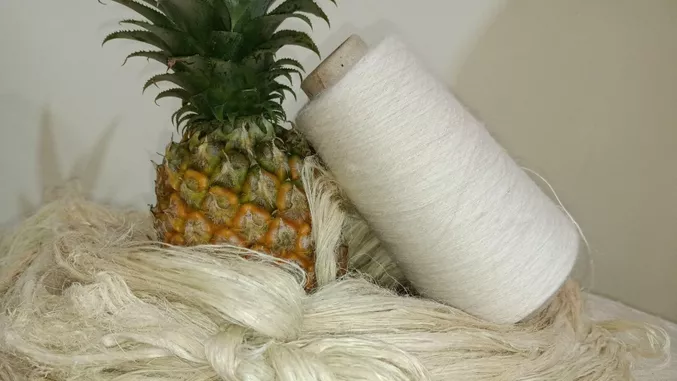Pineapple fabric is a sustainable material derived from nature, popular in fashion and everyday life. Learn more about it here!
What is pineapple fabric?
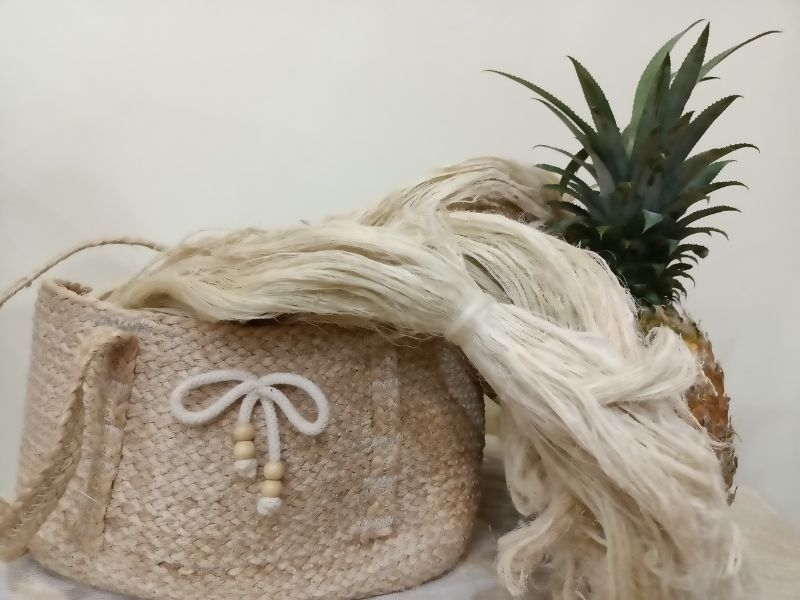
Pineapple fabric, also known as piña fabric, refers to a type of textile made from the fibers of the pineapple plant, specifically from the leaves of the pineapple fruit. The process of producing pineapple fabric involves extracting the long, fine fibers from the leaves and spinning them into threads, which are then woven into fabric. This natural fiber is typically lightweight, breathable, and has a luxurious appearance due to its shiny and silky texture. Pineapple fabric is often used in the creation of various clothing items such as blouses, dresses, and accessories, showcasing its versatility and eco-friendly nature.
Pineapple fabric, also known as pandan leaf fabric, is a type of fabric that is obtained from pineapple plants. This fabric is made by harnessing the natural resources of pineapple plants, making it an important material in the fashion industry. Its production helps to minimize damage to the environment, which is crucial considering that the fashion industry is one of the leading contributors to environmental pollution worldwide, ranking as the second-most polluting industry.
Pineapple fabric is known for its thin and soft properties, making it a preferred material over other plant fibers like jute and coconut fiber. It is considered safe and easy to work with. To enhance its strength, durability, and absorbency, additional ingredients such as cotton and bamboo fiber are often added to pineapple fabric.
According to statistics, in order to produce 1 square meter of pineapple fabric, approximately 15 to 16 pandan leaves are used. Pineapple fabric products are known for their high durability and are naturally biodegradable, making them an environmentally friendly choice. As a result, many major brands like Uniqlo, H&M, and Hugo Boss have opted to use this clothing material.
Origin of pineapple fabric
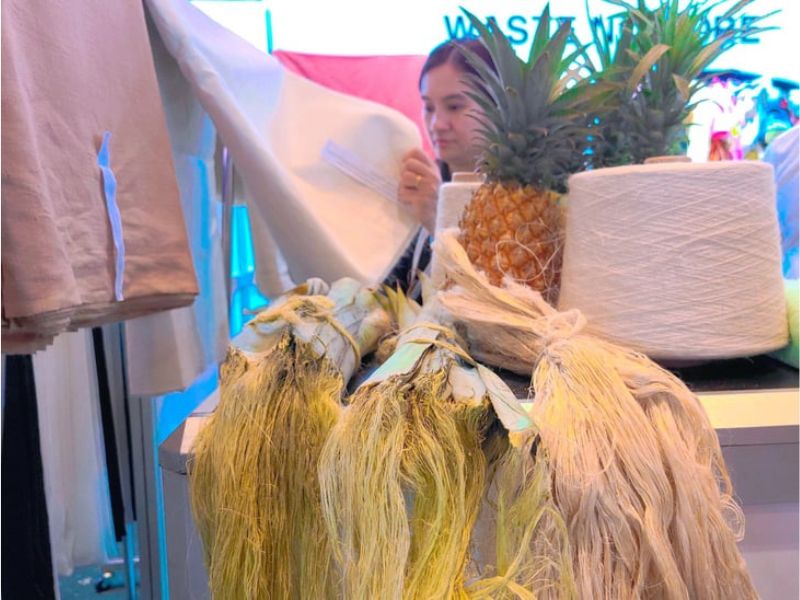
The origin of pineapple fabric can be traced back to the Philippines. Pineapple fabric, also known as piña, is made from the fibers of the pineapple plant. The production of piña fabric involves a labor-intensive process that begins with the extraction of the pineapple leaves, which are then hand-processed to obtain the fine fibers. These fibers are carefully woven using traditional techniques to create a sheer and lightweight fabric. Pineapple fabric is renowned for its natural sheen and durability, making it a popular choice for high-quality garments and luxurious home textiles.
Pineapple is a popular plant that is typically cultivated in regions with tropical and subtropical climates, including Vietnam, the Philippines, Indonesia, and India. In the Philippines, locals have been skilled in the art of fabric weaving using pineapple fibers for many years. Despite their expertise, the technique has not gained widespread adoption due to its low efficiency in production.
According to archaeological research, pineapple fabric was used in African countries and Greece centuries ago. However, in the 19th century, cotton fabrics became popular due to their affordability and low labor costs. This led to a decline in the production and availability of pineapple fabric in the market, with it mostly being preserved in traditional products in the Philippines.
At the start of the 21st century, there was a growing interest in pineapple fabric as a material for traditional Philippine clothing. This fabric, known for its unique properties, started to gain recognition and became increasingly popular. Over time, its usage expanded, and it became more widely incorporated into various clothing styles.
In Vietnam, there is a brand called ECOSOI that specializes in manufacturing pineapple fabric. They produce this fabric from raw materials and export it to markets in Europe and America. This development is seen as a positive indication for the sustainable fashion industry in Vietnam. It also creates a new opportunity for the pineapple growing industry to explore a different direction.
Pineapple is a fruit-bearing plant, and it is estimated that over 40,000 tons of pineapple leaves are discarded and left to decompose naturally every year due to the absence of any industry utilizing them.
Hence, the progress made in the manufacturing industry of pineapple fabric has played a vital role in mitigating soil and water pollution. This advancement has also resulted in a significant reduction in the release of ash into the environment during the burning of fields and the destruction of pandan leaves.
Vietnam currently has a pineapple cultivation area that spans over 34,000 hectares. This places Vietnam as the 10th largest producer of pineapples in the world, with an annual harvest of over 550,000 tons. Due to the abundance of raw materials, pineapple fabric is seen as a material with significant potential for development in Vietnam.
The process of creating fabric made from pineapple fibers.
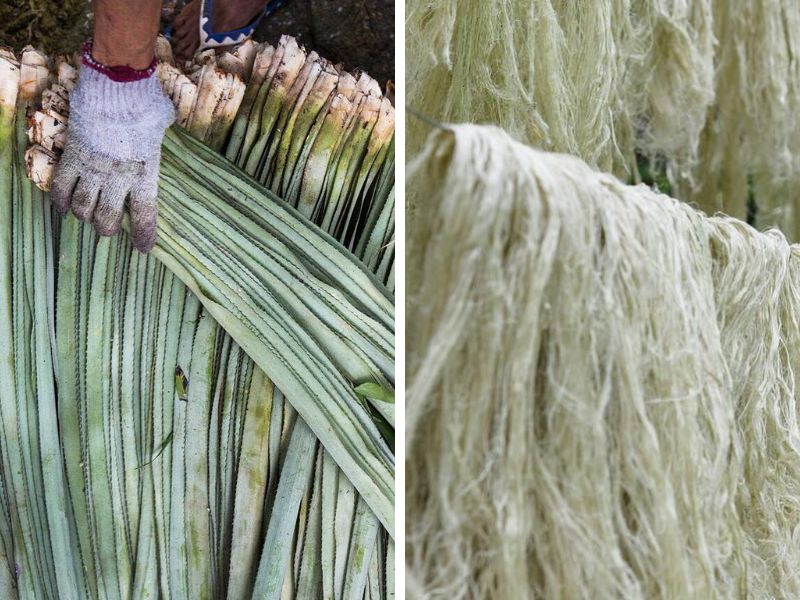
The pineapple fiber fabric production process involves several steps, starting from the harvesting of pineapple leaves. Once the leaves are collected, they undergo a process called decortication where the outer skin is removed to extract the long fibers within. These fibers are then cleaned and washed to remove any impurities.
Next, the fibers are dried either through natural sun drying or by using mechanical drying techniques to reduce moisture content. Once dry, the fibers are carefully sorted and aligned to ensure uniformity in the fabric. This is followed by a process known as combing, where the fibers are combed to remove any tangles or knots.
After combing, the fibers are spun into yarns using a spinning machine. These yarns are then ready to be woven into fabric. Weaving can be done using traditional handloom methods or advanced industrial looms, depending on the scale of production.
Once the fabric is woven, it is subjected to a finishing process that involves bleaching, dyeing, and sometimes printing. This step gives the fabric its desired color, pattern, and final appearance. The finished fabric is then inspected for quality, and any defects are rectified before it is ready for distribution and use.
Overall, the pineapple fiber fabric production process requires careful handling of the raw material, precise extraction of fibers, proper cleaning and drying techniques, skilled weaving, and a meticulous finishing process to create a high-quality fabric that is both eco-friendly and sustainable.
Similar to other natural fibers, the production process of pineapple fabric involves several basic steps such as harvesting, processing, spinning, and weaving. However, since the main ingredient of pineapple fabric comes from pandan leaves, there are a number of additional processing steps involved. To create pineapple fabric, the following procedure is followed:
- Harvesting pandan leaves: After harvesting the fruit, people will separate the pandan leaves from the hard base below, then tie the pandan leaves into large bundles and bring them to the factory.
- Fiber extraction: Fresh pandan leaves are put into the fiber-wrecking machine. With the crushing pressure from the roller, the pandan leaf fibers will be separated.
- Water separation: This is the step to completely remove the water in the pandan leaves, helping the fabric fibers to be looser and easier to separate.
- Fiber separation: After the water has been squeezed out, the fibers and leaf residue will be separated. This step can be done by machine or by hand.
- Clean and dry: With the pandan leaf fibers separated from the above step, people will clean them by soaking them in a large water tank, then gently wringing them with a machine and drying them in the sun. In the factories pineapple fabric On a large scale, people often use industrial dryers to dry fabric fibers more quickly.
- Spinning: After being cleaned and dried, the pineapple fiber will be put into the spinning machine to create the finished thread.
- Weaving:Finally, people will use pineapple silk to weave fabric, creating a finished product with a milky white, shiny, smooth fabric surface.
Pros and cons of using fabric made from pineapple fiber
When learning about any fabric material, it is essential to have a clear understanding of its advantages and disadvantages in order to use it appropriately. Therefore, in evaluating pineapple fabric and determining whether it is a good choice or not, one must consider the benefits and drawbacks it offers.
Advantage
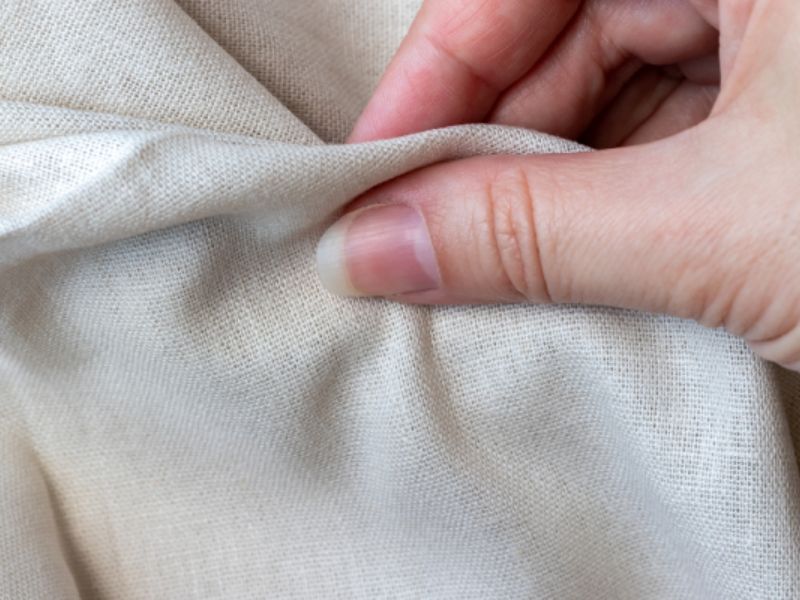
There are several advantages of using pineapple fabric. Pineapple fabric is a sustainable and eco-friendly alternative to traditional fabrics. It is made from pineapple leaf fibers, which are a byproduct of the fruit industry. By using pineapple fabric, we can reduce waste and make use of a renewable resource.
Pineapple fabric is also known for its durability and strength. It is a highly resilient material that can withstand frequent use and washing without losing its shape or color. This makes it ideal for various applications, such as clothing, upholstery, and accessories.
Furthermore, pineapple fabric is breathable and comfortable to wear. It has natural moisture-wicking properties, which help to keep the body cool and dry. This makes it a great choice for garments that are worn in hot and humid climates.
Another advantage of pineapple fabric is its hypoallergenic properties. It is less likely to cause skin irritations or allergies compared to synthetic fabrics. This makes it a suitable option for individuals with sensitive skin or allergies.
In addition to these practical advantages, pineapple fabric also offers a unique and stylish look. It has a natural sheen and texture that adds an element of interest to any design. The fabric can be easily dyed and printed, allowing for a wide range of creative possibilities.
Overall, the advantages of pineapple fabric make it a compelling choice for those looking for sustainable, durable, comfortable, and stylish textiles.
Pineapple fabric, derived from plant fibers, is a sustainable fabric that falls under the category of “green” materials. In comparison to synthetic and artificial textiles, pineapple fabric offers numerous notable advantages to its users.
- Environmental friendliness: As can be seen, the production process pineapple fabric is carried out with the support of a fiber separator, including basic steps such as soaking, fiber separation, without using any toxic chemicals. Therefore, waste from the production process pineapple fabric Completely harmless to the environment and ecosystem.
- Take advantage of natural resources: As you know, pineapple is a fruit crop. Therefore, the leaves seem to be underutilized. Therefore, many people often choose to burn the fields to destroy it. Therefore, the production industry pineapple fabric Not only does it help to utilize raw materials, it also protects the environment and promotes the pineapple growing industry.
- Soft, easy to print and dye: Pineapple silk has a thin, smooth texture, creating products with a shiny, soft, breathable surface. At the same time, pineapple fabric also has the advantage of easily absorbing dyes, thereby giving customers many choices with a diverse color palette.
- Durable: When using fabrics of natural origin, people often worry about fading, shrinkage, and wrinkling. However, with pineapple fabricyou can be completely assured because this fabric is extremely colorfast, has a durable fiber structure, and is guaranteed not to shrink or wrinkle after many washes and uses.
Defect
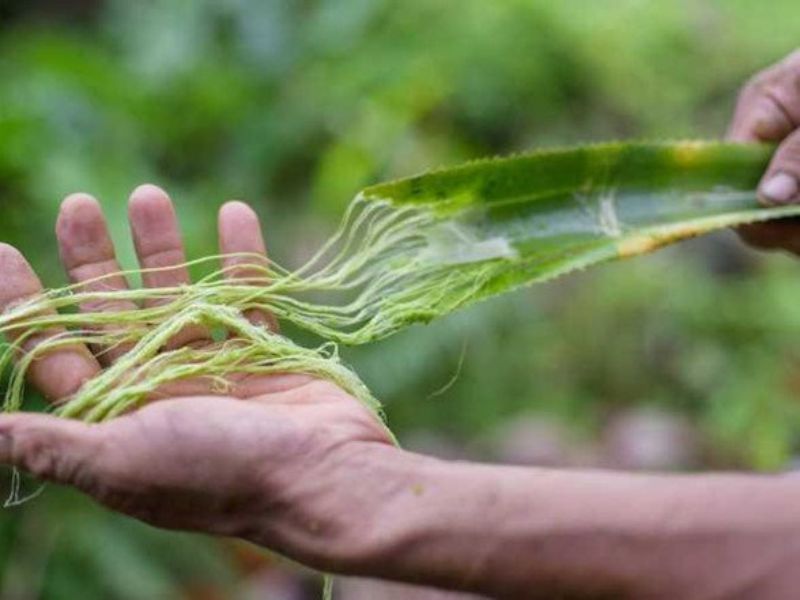
There are several disadvantages associated with pineapple fabric. Despite its unique and eco-friendly nature, there are certain drawbacks to using this material. Some of these disadvantages include:
1. Limited Availability: Pineapple fabric is not as readily available as other traditional fabrics like cotton or polyester. The process of extracting fibers from pineapple leaves is time-consuming and requires specific expertise, which makes it difficult to mass-produce.
2. Cost: Due to its limited availability, pineapple fabric tends to be more expensive compared to mainstream fabrics. The scarcity of raw materials and the labor-intensive manufacturing process contribute to the higher production costs, making it less affordable for mass consumption.
3. Fragile Nature: Pineapple fabric is known to be delicate and less durable compared to synthetic fabrics. It is prone to tearing or fraying more easily, requiring careful handling and maintenance. This fragility may limit its practicality for certain applications that require a more robust and long-lasting fabric.
4. Limited Color Options: The natural color of pineapple fibers is mostly in shades of beige or off-white. While this neutral color can be versatile, it may not fully cater to the wide range of color preferences and fashion trends. The limited availability of vibrant or darker shades can be a drawback for those seeking more diverse options.
5. Special Care Requirements: Pineapple fabric often requires special care and attention during cleaning. It is typically recommended to hand wash or use gentle cycles when laundering pineapple fabric to prevent damage. Additionally, it may require specific detergents or fabric treatments to maintain its quality, adding to the overall maintenance requirements.
6. Allergenic Potential: Some individuals may develop allergies or sensitivities to pineapple fabric, particularly in cases where residual chemicals or latex from processing are present. Those with sensitive skin or allergies should exercise caution or conduct thorough testing before wearing or using products made from pineapple fabric.
While pineapple fabric offers numerous benefits, it is essential to consider these disadvantages to make informed decisions regarding its use and suitability for specific applications.
In addition to the advantages mentioned earlier, pineapple fabric, also known as Piña fabric, has its own set of limitations. These limitations include:
- Uneven development: Although it is a highly valued material in the sustainable fashion trend, in reality, pineapple fabric is not really popular in the world. It is mainly concentrated in regions and countries that grow this agricultural product.
- High price: In general, with a small consumption source, production technology pineapple fabric has not really been focused on and optimized. Therefore, production costs pineapple fabric are often quite high, which makes the cost of products made from them pineapple fabric become expensive.
- Pesticide residues from pandan leaves: Purchasing pandan leaves from farms can result in pandan leaves containing pesticide residues, which can affect the quality of the fabric and be unsafe for the wearer’s skin. However, this can be overcome by harvesting pandan leaves from organic farms.
Possible rephrasing options:
1. Practical uses for pineapple fiber fabric
2. Various applications for fabric made from pineapple fiber
3. Utilizations of pineapple fiber textile
4. How pineapple fiber fabric can be utilized
5. Versatile applications for fabric derived from pineapple fiber
6. The different uses of fabric made from pineapple fibers
7. The practical applications of pineapple fiber material
8. Ways to utilize pineapple fiber fabric
9. Potential uses for pineapple fiber textile
10. The diverse applications of fabric derived from pineapple fibers
11. Practical uses for pineapple fiber-based material
12. The various applications of pineapple fiber fabric
13. The versatility of fabric made from pineapple fibers
14. Possible applications for pineapple fiber fabric
15. How fabric derived from pineapple fiber can be used
16. Practical ways to use pineapple fiber fabric
17. The potential uses of pineapple fiber textile
18. Various practical applications for fabric made from pineapple fibers
19. Different ways to utilize pineapple fiber-based fabric
20. The wide range of applications for pineapple fiber fabric
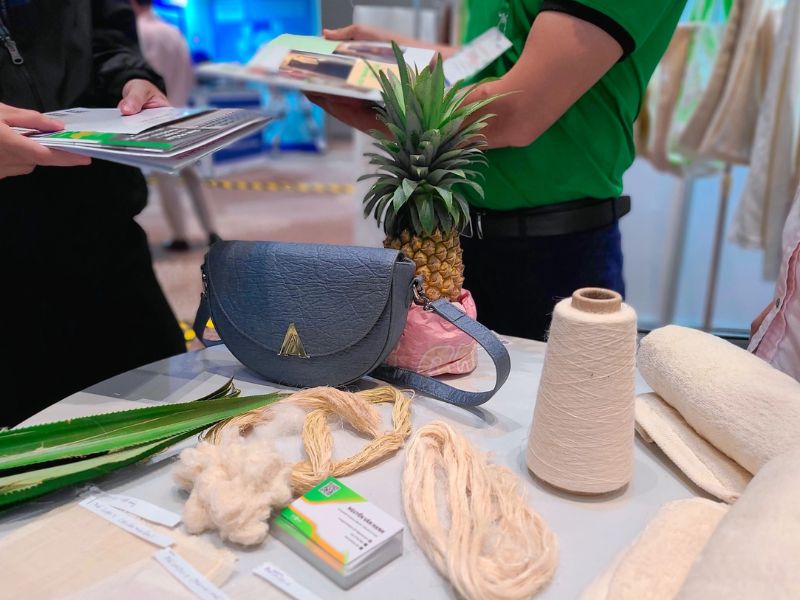
Pineapple fiber fabric, also known as Piña fabric, has numerous applications that enhance various aspects of our daily lives. This innovative and sustainable material is derived from the leaves of pineapple plants, making it an eco-friendly option.
One significant application of pineapple fiber fabric is in the fashion industry. It is used to create stylish and comfortable clothing items such as shirts, dresses, and even luxury garments. The fabric’s natural shine and soft texture make it a popular choice among fashion designers and consumers looking for sustainable and unique clothing options.
In the field of home decor, pineapple fiber fabric adds a touch of elegance and sustainability. It can be used to make curtains, upholstery, and decorative items such as pillowcases and table linens. The fabric’s natural properties make it a great choice for creating a cozy and eco-friendly environment in our homes.
Furthermore, pineapple fiber fabric finds utility in the production of accessories, such as bags, shoes, and hats. These accessories not only showcase a distinct style but also contribute to the conservation of the environment. By opting for pineapple fiber accessories, individuals can make a positive impact on the planet while staying fashionable.
Beyond fashion and home decor, pineapple fiber fabric also has industrial applications. It is used in the production of filters, which help purify air and water in various settings. This demonstrates the versatility and versatility of this sustainable material in improving the quality of our everyday lives.
In summary, the applications of pineapple fiber fabric are diverse and impactful. From clothing to home decor and even industrial use, this innovative material offers a sustainable alternative that promotes both style and environmental conservation. Embracing pineapple fiber fabric in our lives not only enhances our personal style but also contributes to a greener and more sustainable future.
It is evident that sustainable fashion has become a prevailing trend in the global fashion industry. Along with this, there has been an emergence of various eco-friendly materials in the market, including pineapple fabric, bamboo fiber fabric, coffee fiber fabric, mint fiber fabric, and many more. These “green” materials not only contribute positively to the environment but also offer users a wide range of versatile applications.
- Fashion: Pineapple Fabric commonly used in the women’s fashion industry with fashion items such as dresses, skirts, handbags, shoes, etc. Besides, you can also come across pineapple fabric in men’s fashion items such as men’s shirts, men T – shirt, men’s pants,… Pineapple fabric Gives the wearer a close, rustic look with a comfortable, pleasant, cool feeling.
- Appliances: With breathable, absorbent and durable properties, pineapple fabric It is also used in household products such as ropes, carpets, tablecloths, coasters, etc., creating a space with a classic, impressive style.
- Automotive industryWith a fairly thin and light surface, you will probably be quite surprised when pineapple fabric used in the automotive manufacturing industry. In fact, pineapple fabric Applied in the automotive industry with products such as conveyor belts, tires,…
- Cosmeceuticals: Pineapple silk contains compounds and vitamins that are beneficial to the human body. Therefore, pineapple fabric is also an ingredient in the pharmaceutical and cosmetic manufacturing industry.
- Paper manufacturing industry: In the paper industry, people often use pineapple fabric as an auxiliary material to improve paper quality.
Tips for maintaining and extending the lifespan of pineapple fiber items.
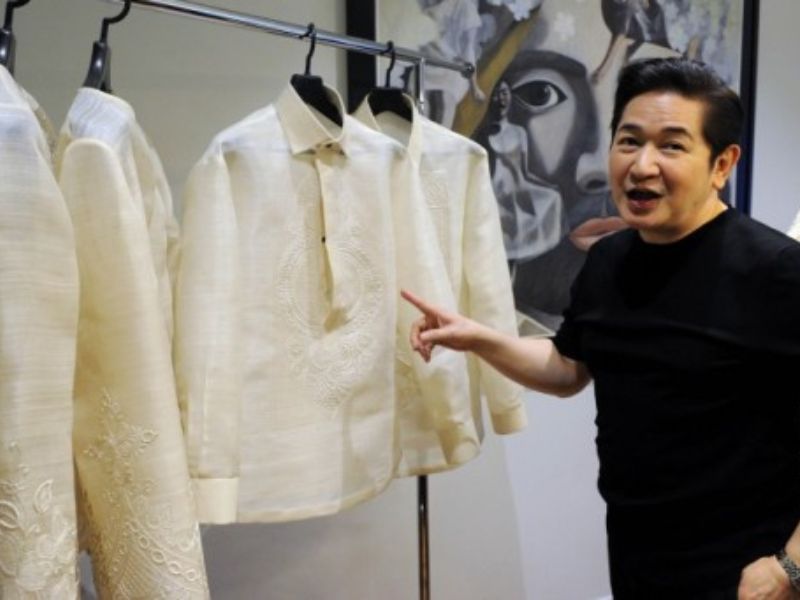
If you want to know how to properly wash and preserve pineapple fabric, here are some detailed steps you can follow:
1. Check the care label: Before washing the pineapple fabric, always check the care label attached to the garment. This label provides specific instructions on how to clean and care for the fabric. It may recommend hand washing or machine washing, and may also specify the water temperature and any other special considerations.
2. Pre-treat stains: If there are any stains on the pineapple fabric, it is recommended to pre-treat them before washing. You can use a mild stain remover or gently rub some detergent directly onto the stained area. Leave it to soak for a few minutes before proceeding to the next step.
3. Hand washing: If the care label suggests hand washing, fill a basin or sink with lukewarm water. Add a gentle detergent that is suitable for delicate fabrics. Submerge the pineapple fabric in the water and gently agitate it for a few minutes. Avoid scrubbing or wringing the fabric, as this can damage the fibers. Rinse the fabric thoroughly with clean water until all the soap is removed.
4. Machine washing: If machine washing is recommended, set the washing machine to a gentle or delicate cycle with cold or lukewarm water. Use a mild detergent specifically designed for delicate fabrics. Place the pineapple fabric in a mesh laundry bag to protect it during the wash cycle. Avoid washing the fabric with heavy or abrasive items that could cause damage. Once the cycle is complete, promptly remove the fabric from the washing machine to prevent wrinkles from setting in.
5. Drying: After washing, gently squeeze out any excess water from the pineapple fabric. It is advisable to lay the fabric flat on a clean and dry towel to air dry. Avoid hanging it as this can cause stretching or distortion. Keep it out of direct sunlight to prevent fading. If you are using a drying rack, make sure it is designed to support delicate fabrics without causing damage.
6. Ironing and storing: Once the pineapple fabric is completely dry, you may need to iron it to remove any wrinkles. Set the iron to a low or delicate temperature and iron the fabric on the reverse side. Avoid using too much pressure as this can flatten the texture of the fabric. When storing the fabric, ensure it is clean and completely dry. It is best to fold it neatly and store it in a cool, dry place away from direct sunlight and excessive humidity.
By following these detailed steps, you can wash and preserve your pineapple fabric effectively, ensuring it remains in good condition for a longer period of time.
While other natural fibers often require specific washing and care instructions, you won’t have to worry about that with pineapple fabric. Pineapple fabric has a straightforward care and maintenance method that doesn’t require much time and effort, yet still ensures its durability and beauty.
Here are some detailed notes on how to wash products made from pineapple fabric:
1. Start by checking the care instructions on the garment or product. Some pineapple fabric products may have specific washing instructions, and it’s important to follow them to avoid damaging the fabric.
2. If there are no specific instructions, you can generally wash pineapple fabric products by hand or in the washing machine on a gentle cycle. However, handwashing is usually recommended to prolong the lifespan of the fabric.
3. Before washing, turn the product inside out to protect the outer surface and any prints or embellishments.
4. Fill a basin or sink with lukewarm water and add a mild detergent specifically designed for delicate fabrics. Avoid using bleach or harsh chemicals as they can damage the fibers.
5. Submerge the pineapple fabric product in the soapy water and gently agitate it for a few minutes. Be careful not to scrub or twist the fabric aggressively, as this can cause it to lose its shape or tear.
6. Rinse the product thoroughly with clean water until all the soap residue is gone. You can repeat this step if necessary.
7. To remove excess water, gently squeeze the fabric without wringing or twisting it. Avoid using a dryer, as the heat can shrink or damage the pineapple fabric.
8. Lay the product flat on a clean towel and reshape it to its original form. Smooth out any wrinkles or creases.
9. Leave the pineapple fabric product to air dry naturally in a well-ventilated area, away from direct sunlight or heat sources. Hanging it may cause stretching, so it’s better to lay it flat.
10. Once the product is completely dry, you can iron it on a low heat setting if necessary. However, it’s always best to check the care instructions or test a small, inconspicuous area before ironing.
By following these steps, you can ensure that your pineapple fabric products are properly cleaned without compromising their quality or causing any damage.
- Gentle wash mode: In case of washing pineapple fabric machine wash, use the gentle mode. It will help maintain the fabric texture, prevent shrinkage and fading. In addition, to ensure color fastness for pineapple fabricyou should turn the fabric inside out before washing, and also, wash with cold water below 40 degrees Celsius.
- Use fabric softener: Using fabric softener during the washing process will help pineapple fabric becomes softer, at the same time, reduces wrinkles, fuzz, and stiffness after washing.
- Dry in the shade: Pineapple fabric has a breathable, thin surface. Therefore, this is also an extremely fast-drying fabric. Therefore, when drying pineapple fabricyou should dry in a ventilated place with light sunlight. At the same time, don’t forget to shake lightly before drying to limit wrinkles.
- Use hanger: For clothing made from pineapple fabricyou should use a hanger instead of folding it. Because, when folded, on the surface pineapple fabric will easily create folds, thereby reducing the aesthetic of the outfit.
summary
In short, pineapple fabric is a type of fabric that is derived from the leaves of the pineapple plant. The creation of pineapple fabric not only holds significance in the fashion industry but also has a positive impact on the environment. By utilizing pineapple leaves, a byproduct of pineapple cultivation, this fabric reduces waste and promotes sustainability. It is an innovative and eco-friendly alternative to traditional textiles, offering a unique and interesting option for fashion and textile enthusiasts. With the information shared about pineapple fabric, you now have a basic understanding of its origins and its potential as an exciting and sustainable fabric choice.
Fashion Bandung is a trendy clothing brand that specializes in providing fashionable clothing options exclusively for men. Our collection is carefully curated to cater to the modern man’s style needs and preferences. From casual t-shirts to formal suits, we offer a wide range of clothing options to suit various occasions and personal tastes. With an emphasis on quality and attention to detail, each piece in our collection is crafted to ensure both style and comfort. Whether you’re looking for the latest fashion trends or timeless classics, Fashion Bandung is your go-to destination for stylish men’s fashion.
“Click on the link below to access additional information:”

